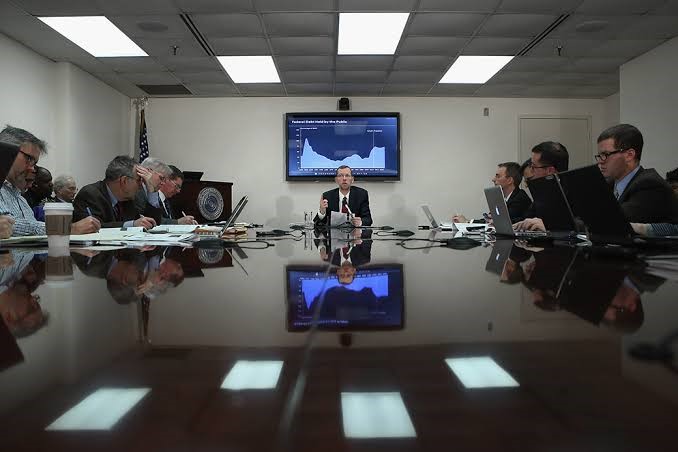The Budget Allocation Process in The United States
The budget allocation process in the United States is a complex and multi-step process that involves the President, Congress, and various federal agencies.
The process is divided into several stages, each of which plays an important role in determining the allocation of federal funds.

The President’s Budget Proposal:
The first stage of the budget allocation process begins with the President’s annual budget proposal, which is typically submitted to Congress in early February. This proposal serves as a blueprint for how the President believes federal funds should be allocated for the upcoming fiscal year. It includes detailed information on the President’s priorities, such as funding for national defense, education, and healthcare, as well as revenue projections and estimates of government spending.
Congressional Budget Resolution:
 After the President’s budget proposal is submitted, Congress begins to consider it and develop its own budget resolution. This resolution serves as a framework for the appropriations process and sets overall spending levels for the various federal agencies and programs. The House and Senate Budget Committees are responsible for drafting and passing a budget resolution, which must then be approved by both chambers of Congress before it becomes law.
After the President’s budget proposal is submitted, Congress begins to consider it and develop its own budget resolution. This resolution serves as a framework for the appropriations process and sets overall spending levels for the various federal agencies and programs. The House and Senate Budget Committees are responsible for drafting and passing a budget resolution, which must then be approved by both chambers of Congress before it becomes law.
Appropriations: Once a budget resolution has been approved, the appropriations process begins. This is where Congress decides how much money each federal agency or program will receive. The appropriations process is broken down into 12 separate bills, each of which covers a specific area of the federal government, such as defense, agriculture, or transportation. These bills are then considered and passed by the relevant appropriations committees in the House and Senate, and must be signed into law by the President before the start of the new fiscal year.
Oversight and Monitoring:
After the appropriations process is completed, it is the responsibility of federal agencies to oversee the allocation and use of the funds they have been allocated. This includes monitoring the implementation of programs and initiatives and ensuring that the funds are being used in compliance with laws and regulations. Additionally, the Government Accountability Office (GAO) and other oversight organizations are responsible for ensuring that federal funds are being used efficiently and effectively.
Reallocation and Mid-Year Adjustments: The budget allocation process is not a one-time event, and there is continuous reallocation and mid-year adjustments made throughout the fiscal year. The
President can submit a revised budget to Congress, proposing changes to the budget, and Congress can also reallocate funds through the appropriations process. Additionally, there are emergency appropriations bills and continuing resolutions that may be passed by Congress to provide additional funding for certain programs or initiatives that were not included in the original budget.
The Office of Management and Budget (OMB)

is responsible for several key functions within the Executive Branch of the United States government. These include:
–Developing and implementing the President’s budget: OMB works with the President and federal agencies to develop the President’s annual budget proposal, which is then submitted to Congress.
–Providing guidance and oversight to federal agencies: OMB issues guidance to federal agencies on budget, management, and policy issues, and also conducts oversight to ensure that agencies are implementing policies and spending funds in accordance with the President’s priorities.
-Reviewing and coordinating federal regulations: OMB reviews proposed regulations from federal agencies to ensure consistency with the President’s policies and to minimize any negative impact on the economy.
-Managing the government’s financial systems: OMB is responsible for ensuring that the government’s financial systems are reliable and accurate, and also works to improve the efficiency and effectiveness of these systems.
-Managing the government’s information technology: OMB works with federal agencies to develop and implement policies and strategies related to the government’s use of information technology.
-Coordinating interagency efforts: OMB coordinates the efforts of different federal agencies to ensure that they are working together effectively to achieve common goals.

In general, the budget allocation process in the United States is a complex and multi-faceted endeavor that involves a wide range of stakeholders, including the President, Congress, and various federal agencies. The process is divided into several stages, each of which plays an important role in determining the allocation of federal funds. The President’s Budget Proposal, Congressional Budget Resolution, Appropriations, Oversight and Monitoring, and Reallocation and Mid-Year Adjustments are some of the key stages in the process.

